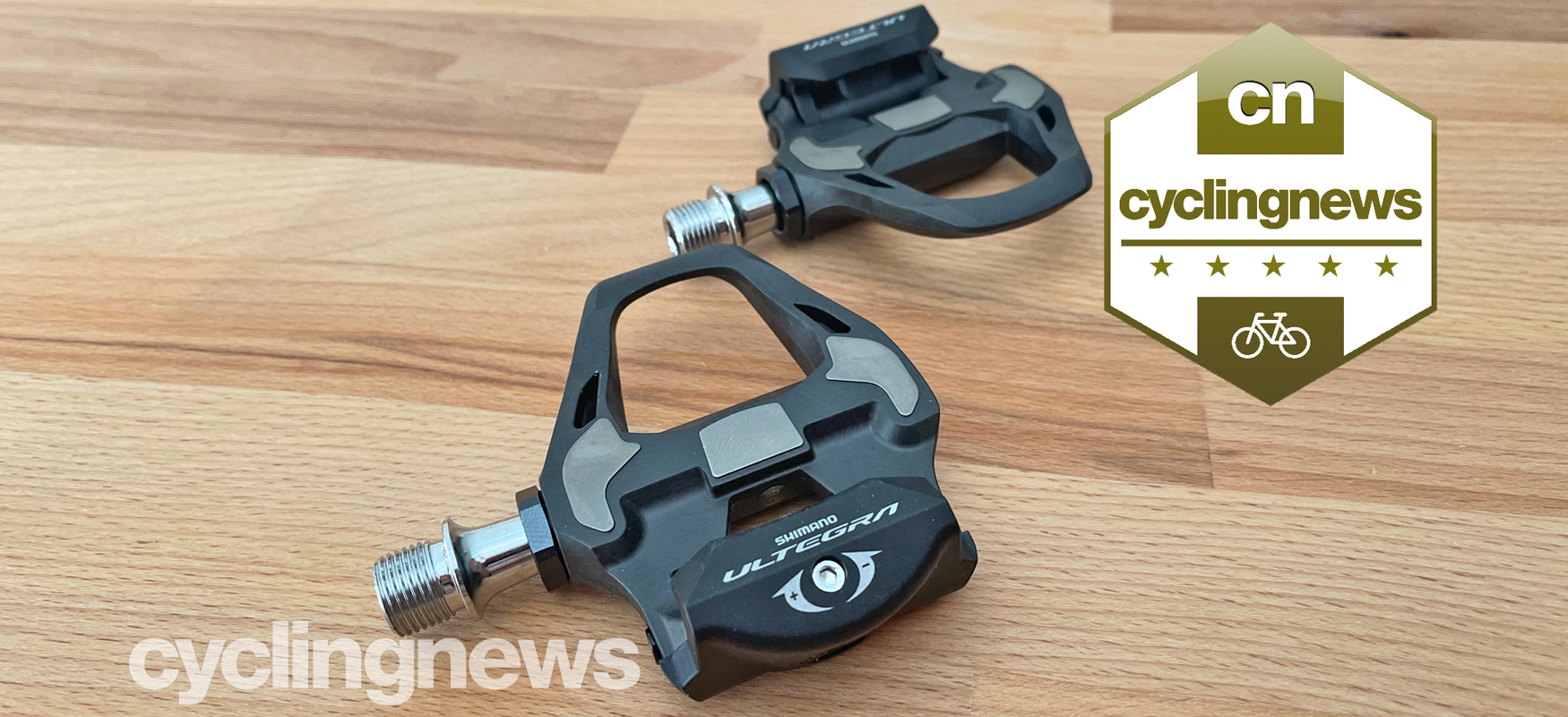Cyclingnews Verdict
The best-kept-secret of the Shimano pedal family with indistinguishable ride feel compared to Dura-Ace
Pros
- +
Weight at 248g
- +
Price to performance ratio
- +
Availability of spares
- +
Performance
Cons
- -
105 offers 95 per cent of the performance at an even cheaper price
You can trust Cyclingnews
Shimano Ultegra is one of the most widely used performance groupsets in the world. As the pedal contingent of that groupset, Shimano Ultegra pedals have a lot to live up to.
Alongside Shimano Dura-Ace 9200, we saw the new Shimano 8100 Ultegra launched, too. Much like its big brother, Shimano didn’t feel the need to make any changes to the existing pedals, so the PD-R8000 pedals carried through to become PD-R8100.
With that in mind, for this review I will focus on the updates from the previous PD-R6800 pedals, and compare to the current series 105 and Dura-Ace options. Those are all from the Shimano SPD pedal family, but I will also look at the competition from Look and Wahoo Speedplay to see how Shimano Ultegra pedals compare to the best road bike pedals out there.
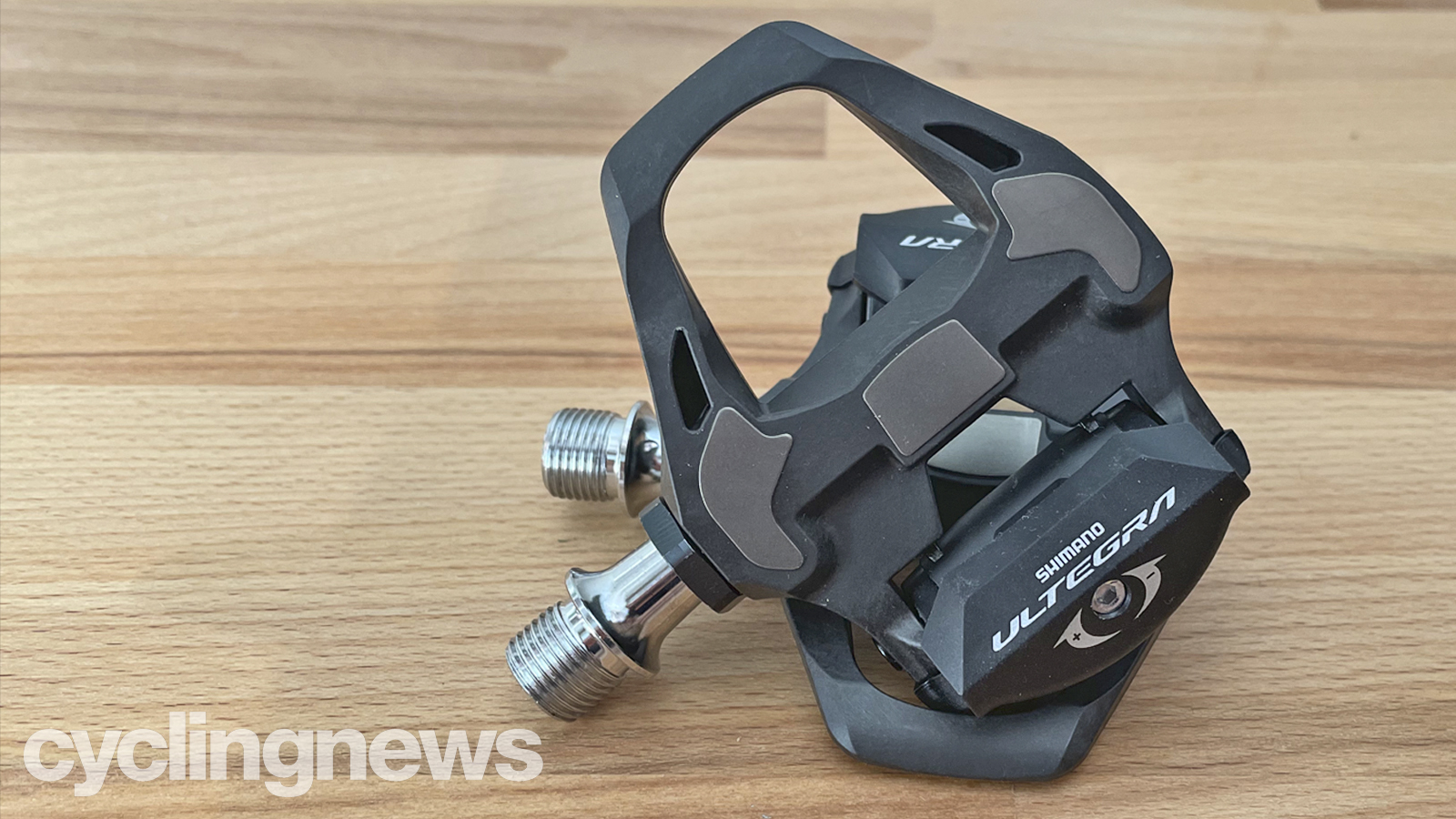
Design and specification
The Ultegra pedal features an increased width over the former PD-R6800 pedal, matching the Dura-Ace with the widest platform on test, at 65mm. Shimano also shaved an already competitively light pedal from 260g down to 248g for the pair, this has been done with a combination of refining the carbon composite body itself and switching the removable steel plates to ones that are bonded into the pedal body. This new plate also helped to reduce the stack height by 0.7mm, as they no longer needed to account for removable hardware.
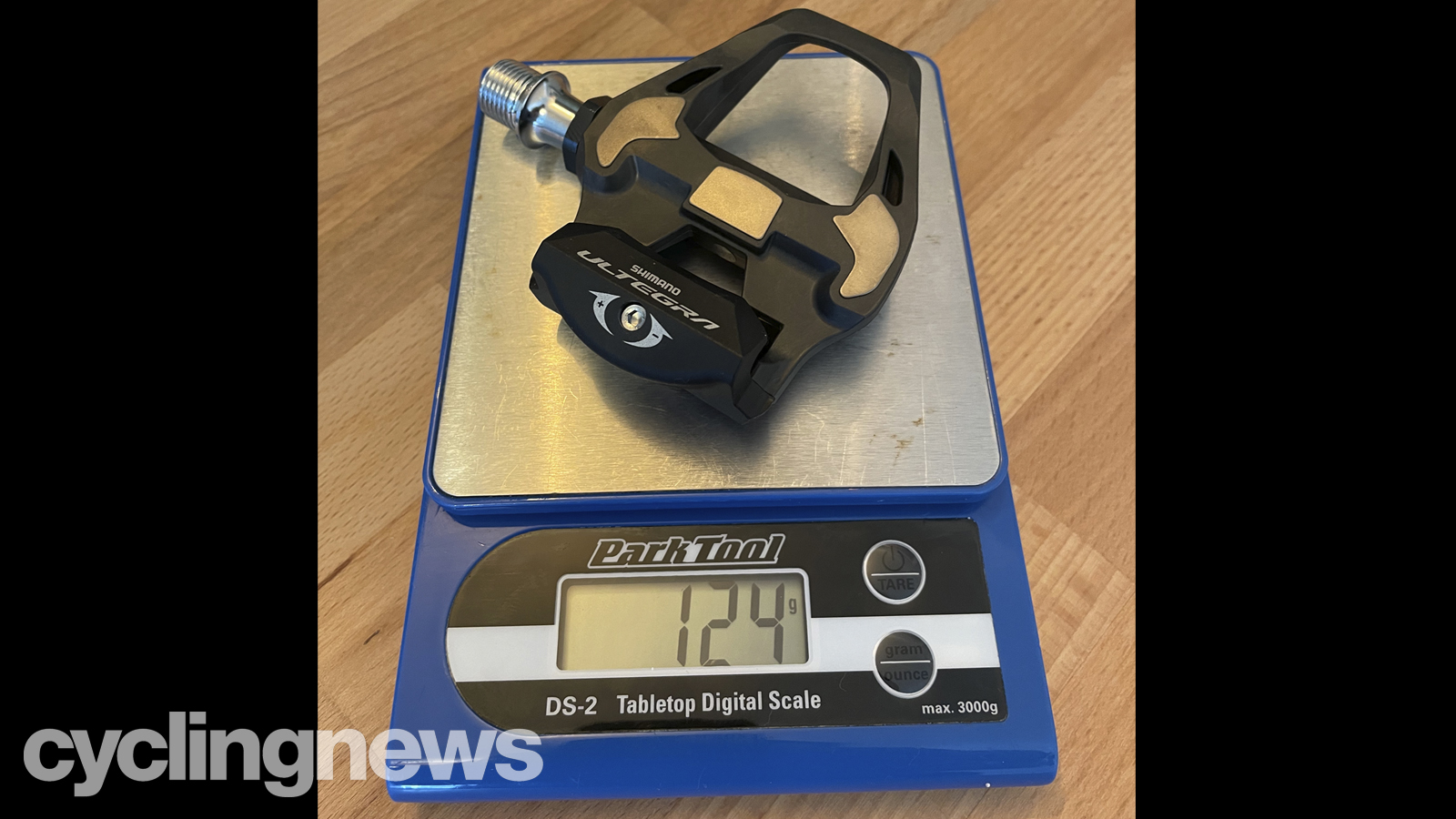
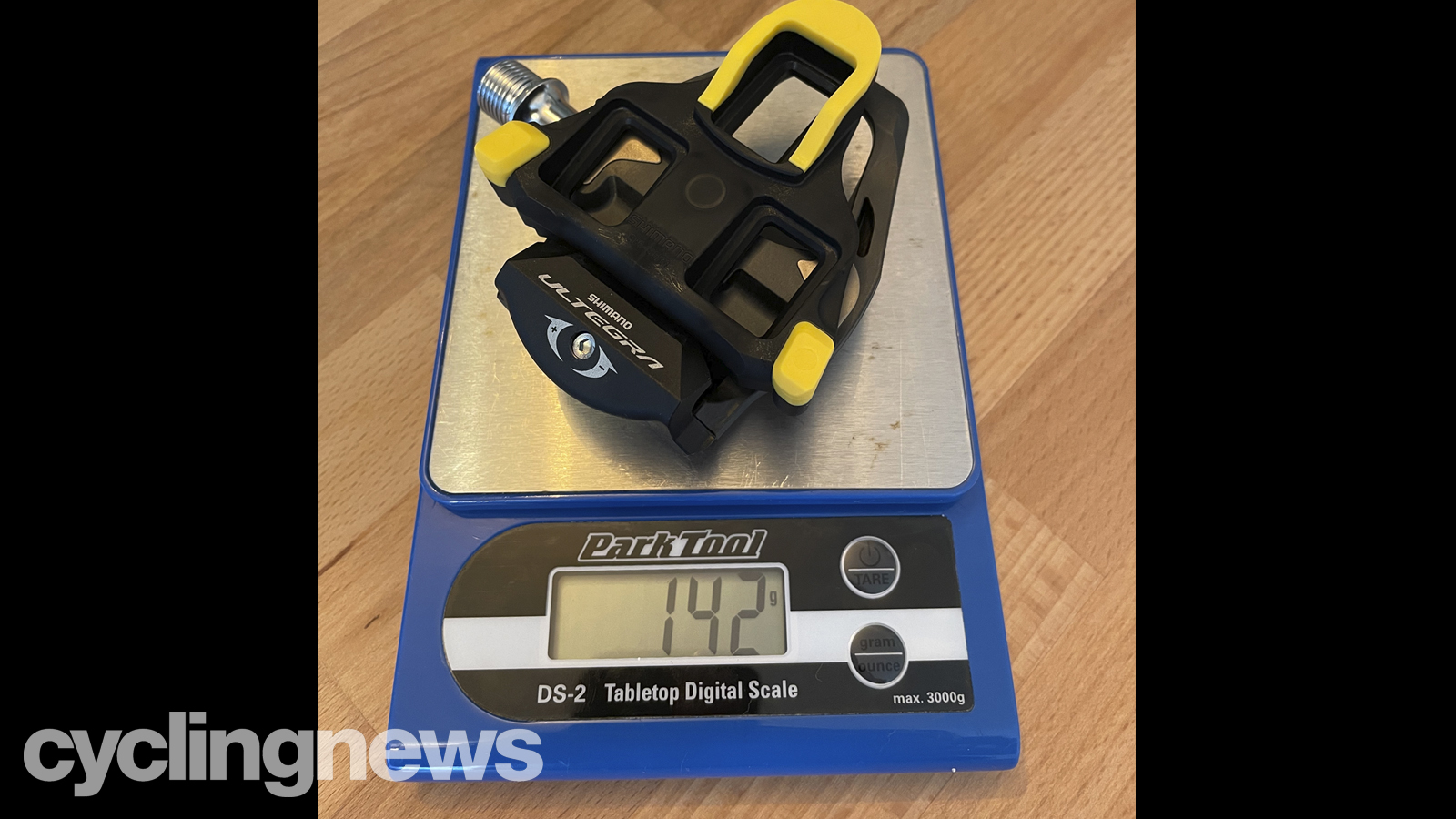
When you have all three pedals lined up you can see the extra refinement between the models that will account for the weight differences, along with the different material choices.
Visibly, they fall halfway between the Dura-Ace (PD-R9200) and the 105 (PD-R7000) pedals, with Ultegra sharing visual clues from both. For example, the wear plates appear to be identical to those found on Dura-Ace, but the axle assembly is closer to that on the 105.
The bearing setup in the Ultegra pedal is the same serviceable two-bearing design that features on the 105 pedal, as well as the previous Ultegra design.
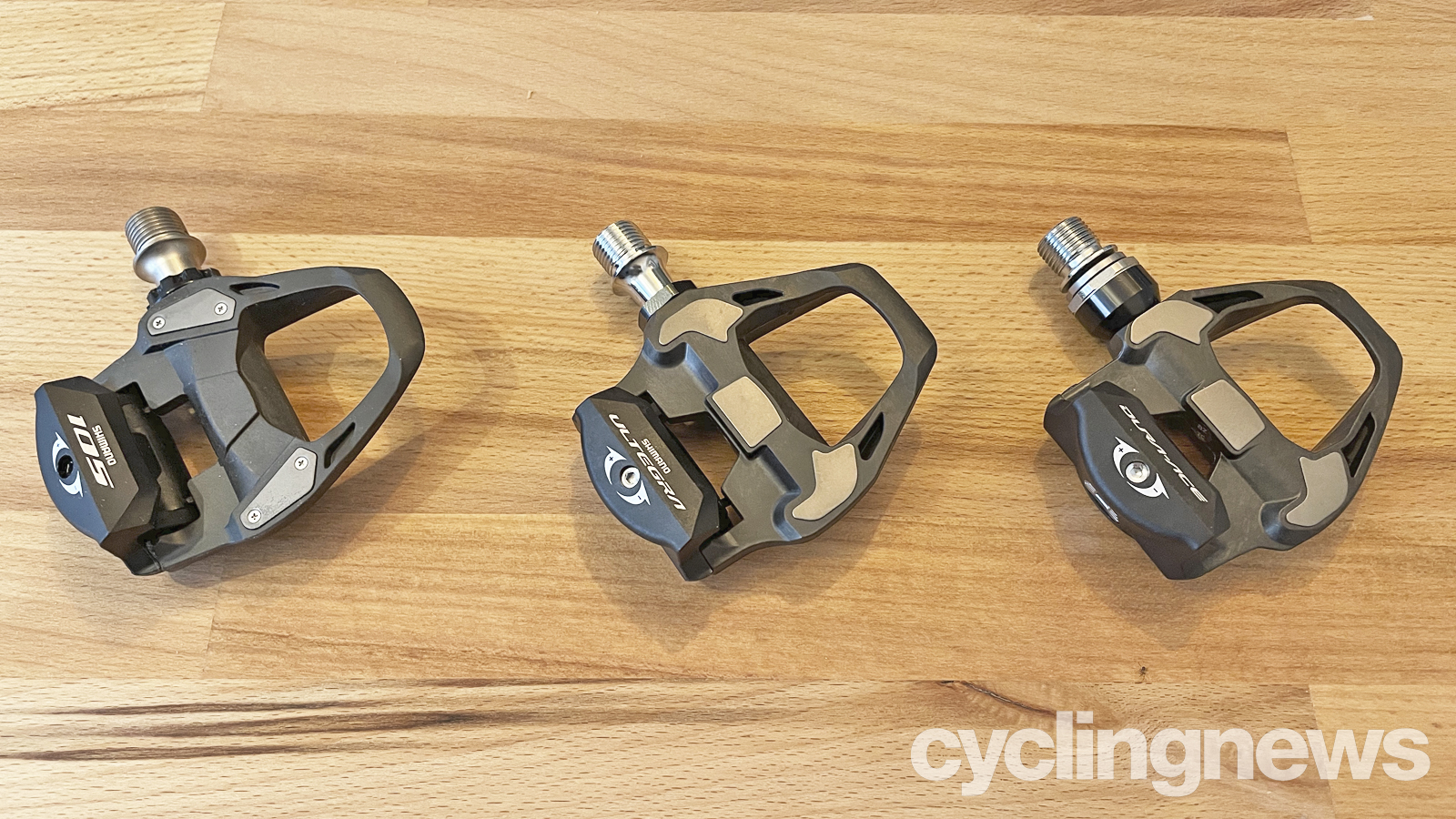
Performance
I own a couple of pairs of Ultegra pedals, and the oldest have been rock solid for over a year.
One pedal did develop a small amount of play, but it was easily rectified thanks to the easily serviceable construction of the axle. To do this, I simply had to use a 17mm spanner to remove the axle assembly from the body of the pedal, then two smaller spanners to adjust the cup and cone bearing system. Also, while I had the body and axle separated I took advantage of the ease at which you can re-grease the Shimano Ultegra pedals (and all the pedals in the Shimano SPD-SL family for that matter) by just pumping a bit of grease into the pedal body with a grease gun. Upon re-installing the axle, the new grease pushes the old grease out. The whole process took no more than 10 minutes and was all refreshingly easy in a world of cartridge bearing and bushes.
With just a single gram separating the Shimano Ultegra pedal from its closest priced Look competitor, the Keo Max 2 Carbon, the durability of the Shimano pedal is what sets it apart from its rival. The Look pedal, by comparison, has one cartridge bearing and one needle bearing, which once worn, is not replaceable so if you are lax with your servicing, it can deteriorate quickly, leading to a costly mistake.
The Shimano Ultegra pedals are supplied with the most popular Yellow cleat option, offering six degrees of float. Of all pedal systems we've tried, Shimano pedals have the firmest feeling when clipped in. Both the Look and Wahoo by comparison are very free feeling, even when the float is reduced or spring tension increased.
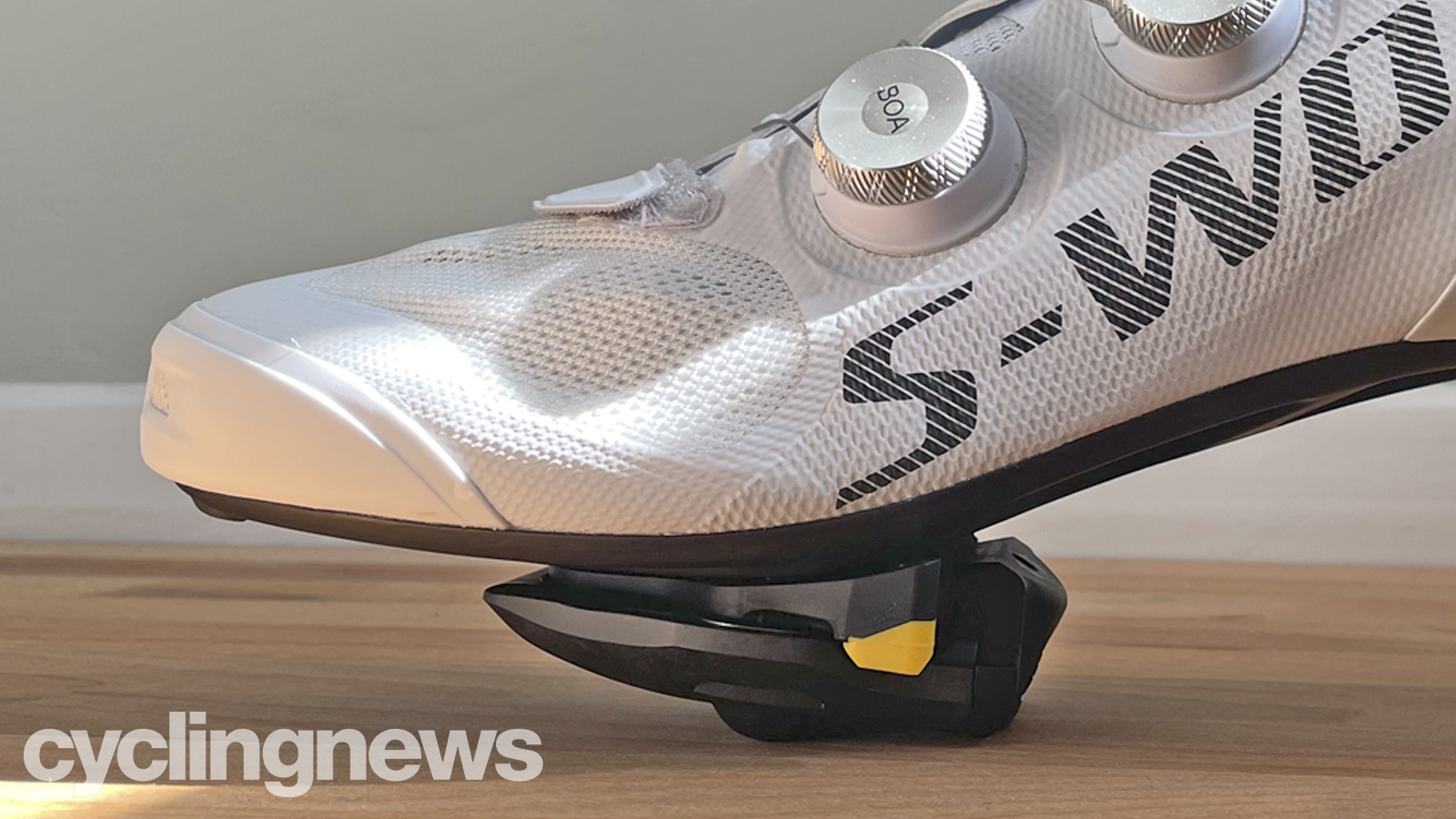
The ride feel of the Shimano Ultegra pedals is virtually indistinguishable from the Shimano PD-R9100, with only the reduced stack height of the Dura-Ace setting them apart in feel. If, however, you are very sensitive to fit you may notice the less-than 1mm difference and have to lower your seat. The almost 2mm stack height difference between the Ultegra and PD-R7000 pedals is more notable though, especially between the Dura-Ace and 105 models stacking up to almost 3mm of difference.
With the supplied cleats, you can vary the feeling from very loose with the retention spring on its lowest setting, up to a very secure fit with it on its maximum setting. If you want a more secure connection again, then you have the option of the Blue (two degrees of float) or Red (fixed) position cleats.
Verdict
In use, the Shimano Ultegra pedals offer 90 per cent of the performance of the more expensive Dura-Ace model but at a far more acceptable price, especially if found with a discount, which is usually possible with Shimano pedals.
The bearings aren’t quite as buttery smooth, and the overall weight is a little higher, but in use, I couldn’t really feel the difference between the two. If you’re basing your buying choice on marginal gains, want that reduced stack height, or want to take advantage of the extra year warranty that Dura-Ace componentry gets, then Dura-Ace might be worth the extra upfront investment, but if you're basing your purchase on how the pedals feel, it’s hard to look past the Ultegra level pedal as they really do offer the same level of ride quality.
Tech Specs: Shimano Ultegra pedals
- Price: £157 / $200 / €185 / AU$249
- Weight: 248g (pair)
- Weight with cleats: 286g
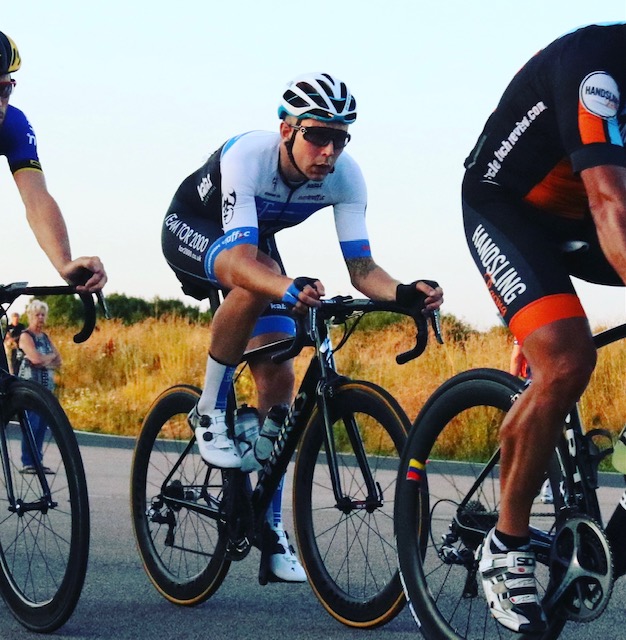
Peter has been riding and racing road, CX, and mountain bikes since the early 2000’s. He spent a decade working at a large independent bicycle shop, handling customer service, warranty and technical questions. Thanks to an obsession with product details he loves nothing more than picking over the newest tech.
Peter is a fastidious mechanic and will not settle for anything less than perfect when it comes to bike setup, whether it be a child first bike or a highly integrated top-tier time trial or road bike.
He’s been writing for Cyclingnews since 2020 as a Contributing Writer, where having a 50km commute to his day job allows him to quickly rack up the miles when putting any new products to the test in all weathers.
He currently rides one of the following: Specialized Tarmac SL6, Basso Diamate, Talbot Frameworks steel road, Trek Emonda ALR, Specialized Crux, Santa Cruz Tallboy.
